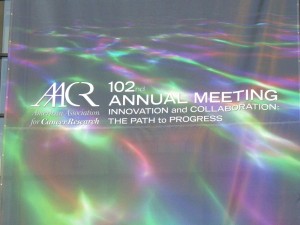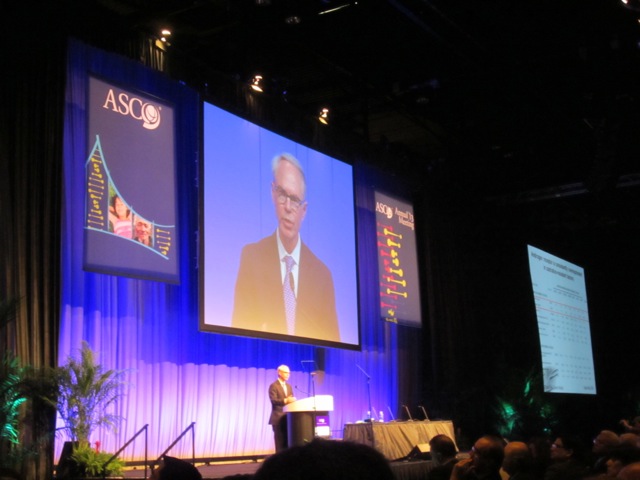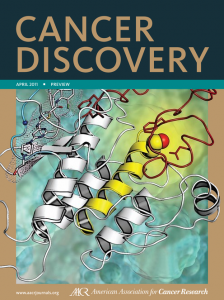 The 102nd Annual meeting of the American Association for Cancer Research (AACR) ended yesterday in Orlando, and it was only the diehards who kept going till the last session of the last day for an update on “Novel Androgen Receptor Antagonists.”
The 102nd Annual meeting of the American Association for Cancer Research (AACR) ended yesterday in Orlando, and it was only the diehards who kept going till the last session of the last day for an update on “Novel Androgen Receptor Antagonists.”
As I mentioned in an earlier post, there is a lot of excitement in the prostate cancer field at the moment with three new therapies approved last year (cabazitaxel, sipuleucel-T, denosumab), and more expected over the next two years (abiraterone acetate, MDV3100, cabozantinib/XL-184).
What I took from the AACR session I attended, is that there are also other products in the pipeline that are worth watching. Below is a list of some of the products that were mentioned. It’s not intended to be a comprehensive review of the prostate cancer landscape, only my notes and thoughts on some of the new products that the speakers touched upon.
Abiraterone Acetate: The postive phase III trial results were reported last year at ESMO and ASCO GU, and the approval of this drug is currently being considered by the FDA. Approval is expected shortly, and possibly in time for launch at the forthcoming annual meeting of the American Urological Association (AUA) meeting in Washington, DC.
Abiraterone (brand name Zytiga) inhibits the enzymes (17-alpha hydroxylase and C17, 20 lyase) responsible for adrenal androgen formation.
The phase III results were impressive in very sick patients who were close to the end of their lives in very advanced disease. Overall survival increased from 10.9 to 14.8 months in the second line chemotherapy setting post docetaxel. It’s expected that the results will be more dramatic pre-chemotherapy.
Once the FDA approval is obtained, it’s hard to see how oncologists will not consider abiraterone instead of cabazitaxel in the second-line chemotherapy setting. An easily taken pill with fewer less side effects may be a more convenient option for elderly or frail men with prostate cancer. Abiraterone’s approval will not be good news for sanofi-aventis.
I also expect we will see significantly off-label usage of abiraterone pre-chemotherapy by urologists as they seek to maintain hormone-sensitivity in their patients after several lines of anti-hormonal therapies. There is a phase III trial ongoing in this setting that is expected to show promising data by the end of the year.
However, it’s a good strategy to come market as soon as possible to provide wider access to patients in need, and the post-docetaxel second line setting allowed the overall survival benefit to be shown before the pre-chemo data would be available.
However, what I learned at the meeting is that abiraterone acetate may not be the best product in the long term. Currently it requires the corticosteroid, prednisone, to be given at the same time to attenuate the mineralocorticoid effects. Questions that were raised in the AACR session about long-term treatment with abiraterone included, “Must a corticosteroid be given concurrently?” and “What about hypertension?”
Other questions remain, such as possible development of resistance to abiraterone. Often the first drug to market is not the best, and it’s possible that second generation new products in the pipeline may be better than abiraterone and delay the time to resistance further.
However, what abiraterone does have is first mover advantage and depending on the pricing strategy adopted by Johnson & Johnson, the ability to capture market share earlier. It will be interesting to see what happens with this drug, but it’s certainly an exciting time for patients with prostate cancer.
TAK-700: This drug from Takeda/Millennium is a more potent inhibitor of C17α-hydroxylase than abiraterone. One of the panelists at AACR believed that TAK-700 “may in the long run surplant abiraterone acetate due to less need for mineralocorticoids.” TAK 700 entered phase III clinical trials late last year.
MDV3100: This drug is being developed by Medivation/Astellas and is also in phase III trials, with data expected by the end of this year or early 2012. It has a high affinity for the androgen receptor. However, what came across in the AACR presentation by Howard Scher, was his view that the second compound developed by Charles Sawyers, ARN-509 may be better than MDV3100.
ARN-509: This drug from Aragon Pharmaceuticals is in phase I/II clinical trials and is definitely one to watch. As Dr Scher pointed out, ARN-509 is more potent than MDV3100 and I expect we will see publication of more data on ARN-509 in the near future.
If you are interested in prostate cancer, AACR are offering webcasts and podcasts of scientific sessions this year. Further information can be found on their website. AACR have also announced a scientific special session on “Advances in Prostate Cancer Research” from February 6-9 2012. It’s certainly an interesting and exciting time in this field as new products become available, something that is likely to make a real difference to how this disease is treated.

 Science drives oncology new product development and the AACR special conferences are always a good place to look for insights into where the field is both emerging and also going in the future.
Science drives oncology new product development and the AACR special conferences are always a good place to look for insights into where the field is both emerging and also going in the future. Next week the Cancer Conference circuit moves on to a double-header with the
Next week the Cancer Conference circuit moves on to a double-header with the 


 There are 5,396 posters at the 102nd Annual Meeting of the American Association for Cancer Research (AACR) here in Orlando. Intermingled with the exhibitors (something that no doubt encourages traffic to the exhibits), the posters provide a window into the world of current cancer research and the spirit of collaboration.
There are 5,396 posters at the 102nd Annual Meeting of the American Association for Cancer Research (AACR) here in Orlando. Intermingled with the exhibitors (something that no doubt encourages traffic to the exhibits), the posters provide a window into the world of current cancer research and the spirit of collaboration.